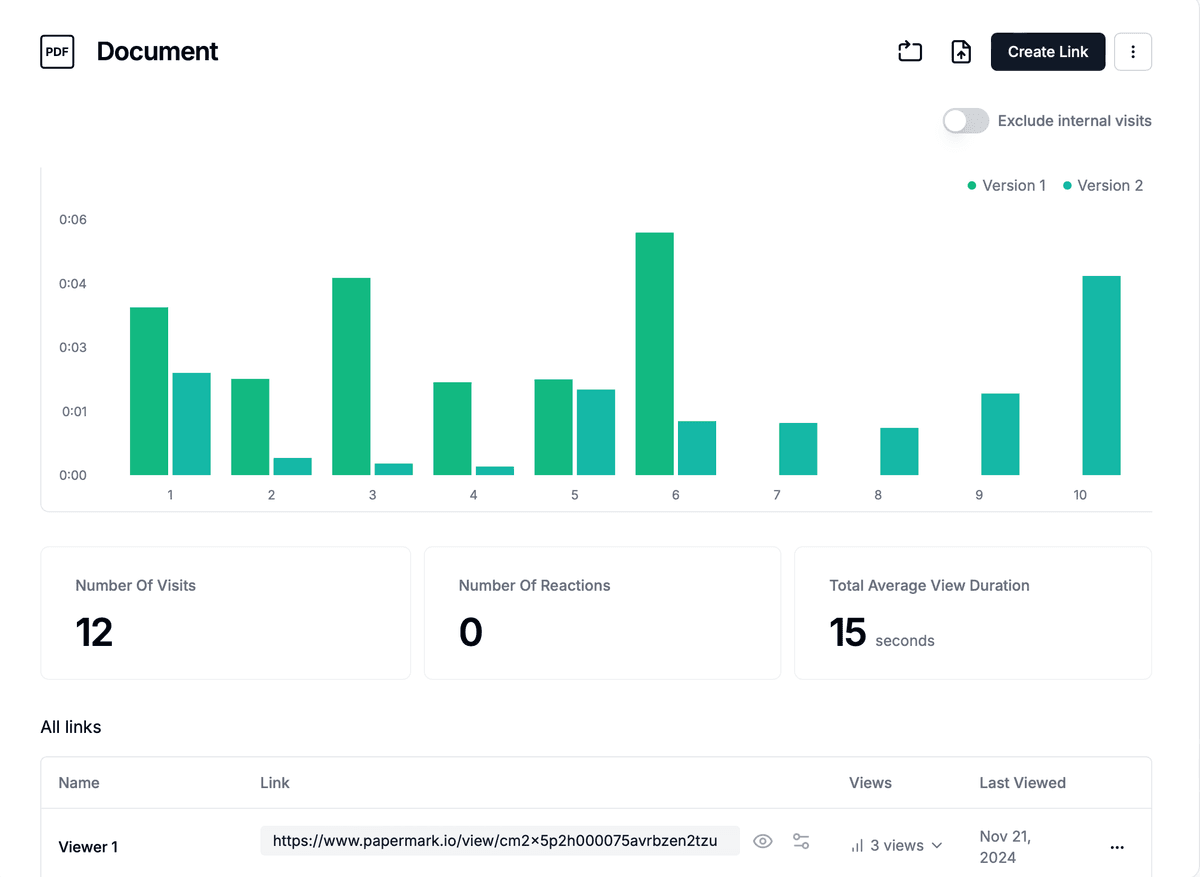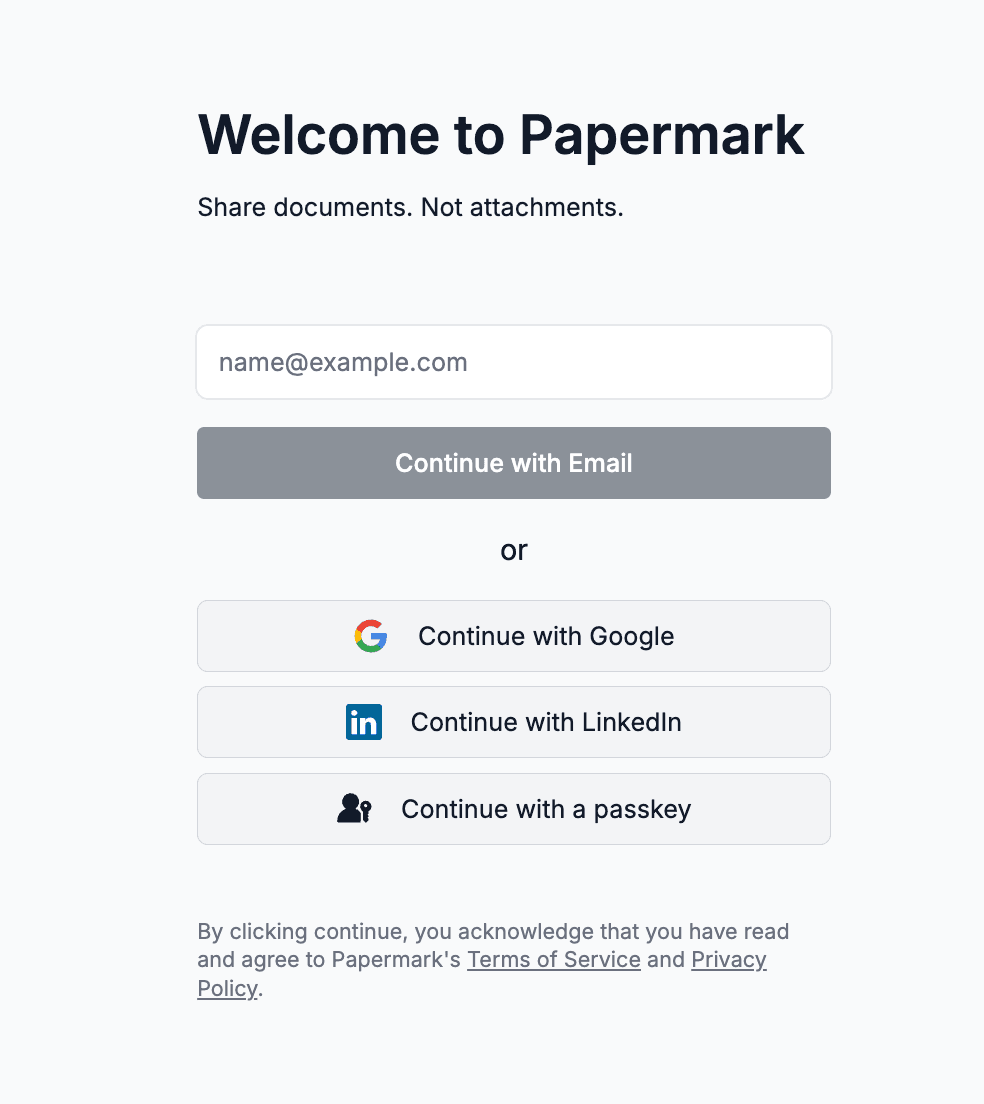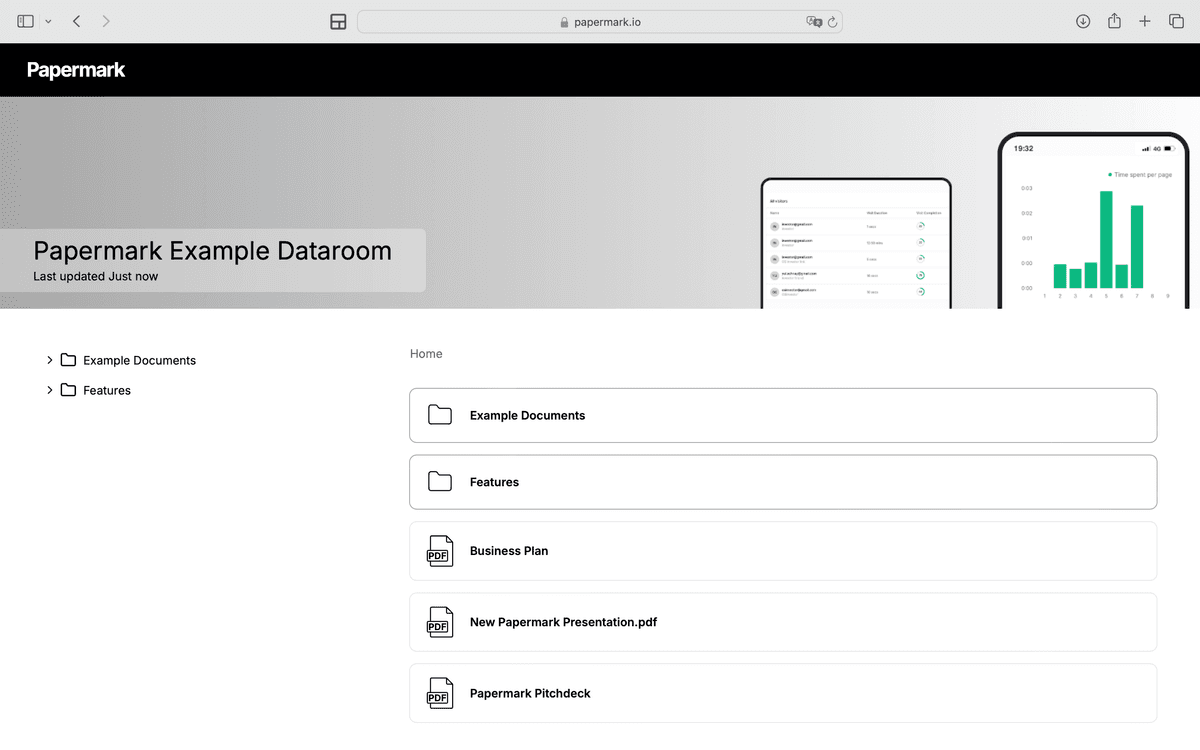¿Qué es un data room en private equity? (guía 2025)
¿Qué es un data room de private equity?
Un data room de private equity (también llamado data room virtual o VDR) es un espacio de trabajo seguro utilizado para compartir documentos confidenciales con inversores, prestamistas, asesores y compradores durante la diligencia debida y la gestión de cartera. A diferencia del correo electrónico o carpetas en la nube genéricas, un VDR proporciona permisos de enlace, controles de acceso, registros de auditoría, NDAs y análisis para que puedas ejecutar un proceso disciplinado de captación de fondos o fusiones y adquisiciones.

Por qué los equipos de private equity utilizan un VDR
- Centraliza todos los archivos de diligencia debida y versiones en un solo lugar
- Añade permisos y controles a nivel de documento (contraseña, caducidad, verificación por email)
- Rastrea la interacción de los inversores página por página para priorizar compradores serios
- Simplifica la supervisión de la cartera con paquetes para el consejo e informes mensuales
- Crea salas específicas para cada comprador sin duplicar trabajo
Qué incluir en un data room de PE
Utiliza esta estructura simple para empezar. Puedes expandir o renombrar carpetas más adelante.
- Visión general de la empresa: estructura corporativa, tabla de capitalización, actas del consejo
- Finanzas: estados financieros históricos (3-5 años), proyecciones, KPIs
- Comercial: listas de clientes y proveedores, contratos, pipeline, precios
- Legal y RRHH: contratos, políticas, acuerdos laborales, propiedad intelectual
- Producto y tecnología: arquitectura, hoja de ruta, seguridad y cumplimiento
- Operaciones: proveedores, herramientas, procesos, SLAs
Cómo crear un VDR de capital privado con Papermark (paso a paso)
Sigue estos pasos para lanzar un VDR profesional en minutos.

-
Crea tu cuenta de Papermark
Visita la aplicación e inicia sesión. Puedes comenzar gratis y actualizar cuando necesites funciones avanzadas.
-
Crea una nueva sala de datos
Haz clic en “Nueva sala de datos”, asígnale un nombre (por ejemplo, “Serie B – Diligencia de capital privado”) e invita a los compañeros de equipo que subirán documentos.
-
Sube documentos por carpetas
Arrastra y suelta tus carpetas (Finanzas, Legal, Comercial, Producto, RRHH). Papermark mantiene la estructura y admite archivos grandes.
-
Configura los permisos del enlace
Establece contraseña, verificación por correo electrónico, caducidad del enlace y límites de visualización. Agrega una puerta de NDA si deseas que los visualizadores acepten los términos antes de acceder.
-
Personaliza la sala
Agrega tu logotipo, selecciona colores y conecta un dominio personalizado para una experiencia de inversor con tu marca.
-
Comparte salas específicas para compradores
Duplica la sala para cada patrocinador si es necesario. Usa permisos granulares y grupos para mostrar diferentes archivos a diferentes postores.
-
Rastrea el compromiso y prioriza
Usa análisis página por página para ver qué documentos y diapositivas leen más los compradores. Enfoca los seguimientos en los inversores más comprometidos.
Caso de estudio: Firma de capital de riesgo recaudando fondos con salas de datos
Vea cómo Icebreaker.vc, una destacada firma de capital de riesgo en etapa inicial, utilizó salas de datos para recaudar exitosamente su Fondo III:
Mejores prácticas
- Mantén los nombres de archivos claros y versionados (ej., FY2024-12 P&L v2.xlsx)
- Protege carpetas sensibles (contratos de clientes, nóminas) con permisos adicionales
- Utiliza preguntas y respuestas específicas para compradores y mantén las respuestas por escrito
- Registra los cambios en una breve nota de “Actualizaciones de sala” para que todos estén alineados
Preguntas frecuentes
Sí. Papermark ofrece una opción de alojamiento propio para empresas con requisitos estrictos de residencia de datos.
